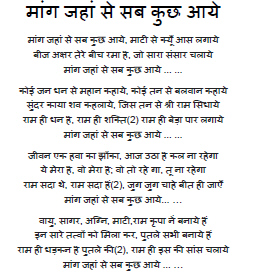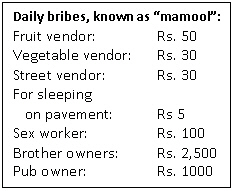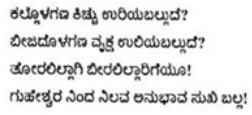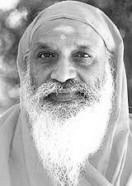Archive for category April 2013
Violence Against Women Endemic in India
Posted by admin in April 2013 on April 8, 2013
By Arun D. Jatkar and Kollengode S. Venkataraman
Note: Arun Jatkar, a long-time Monroeville resident, edits Ekata, a Marathi monthly published from Toronto, Canada.
In late 2012, the gang-rape of a college-going young woman returning home from a movie in the evening with her male friend in New Delhi drew wide coverage in the Indian and global media. That she was gang-raped by six men right in front of her badly beaten-up male friend and dumped on the road severely wounded only to die later, touched a raw nerve among Indian women. After all, it could be any one of them.
Violence against women has always been an endemic problem in India. Rape, particularly gang rape, is an extreme case. Social stigma is one reason why rape cases are rarely reported to the police. Even in the US, as an NPR story reported in mid-January, rapes and attempted rapes are the least-reported crimes in Washington, D.C., the nation’s capital.
That is not the only reason. Indians have become cynical of their criminal justice system for good reason: over 4.3 million cases are pending in Indian High Courts alone (excluding subordinate courts). A judicial commission reporting on the Delhi gang rape stated the obvious: Lack of governance.
But this time, educated women in Delhi protested against the gang rape publicly. They feel they have silently suffered long enough with the molestations by, and aggressive behavior of, men in buses, trains and other public places. After all, every incident of rape occurs after several episodes of aggressive behavior by men. With their economic independence, working women came out protesting. Enough is enough.
Violence against women is a global problem. See here: http://http://tinyurl.com/Delhi-Stbnvl. Rapes have multiple causes — some are generic, others are specific to each society. The patriarchal nature of society is blamed for it in the case of India. To varying degrees, almost all societies are male-dominated and macho, if not “patriarchal.â€
The urban, educated and affluent Indians have a selective and skewed perception of “modern†India, which they project in the Indian English media, in their interactions among themselves and with their global contacts. What is galling and embarrassing to these Indians is that violence against women, like rapes, dowry deaths, and female foeticides, stands in sharp contrast to the skewed image they have created for themselves and internalized.
The protestors were asking the government to act forcefully on rapes, while shaming the government in the media.
But treating serious social crimes against women as a criminal justice issue misses the other socioeconomic and cultural underpinnings. It is worth recalling what Ela Gandhi, the granddaughter of Mohandas Gandhi and a social worker in South Africa, said during her visit to India in January 2013:
“Law[s] alone cannot solve the problems of society. The attitude of the people need to change … … The malaise in society lies in the divisions of caste, class and gender, the three evils that result in societal problems, and women were generally the first victim of all conflicts… … The divisions… … deny access to education, food, healthcare and housing for all in an equitable manner.â€
It is well-known that socioeconomic and cultural conditions such as education, wealth, religion, and social class (castes in India), have no bearing on sexual violence against women. So, reducing sexual violence against women needs a two-pronged approach that covers the whole population spectrum that should focus on
a) Changing the interpersonal dynamics among all teenage and adult men and women. This will try to change the behavior of Indians who are already adults. This is difficult. Ask any addict. But sometime fear of retribution will work among adults.
b) Inculcating good behavior patterns in all children from pre-school onwards. This is easy since you are catching them young in inculcating good behavior. But this requires sustained commitment from society and the resources.
The first one seeks to reduce the incidence of sexual violence committed against women by men. The second one attempts to inculcate behavior patterns in children to enable interpersonal relations and interactions conducive to reducing gender-related violence when they become adults.
Regardless of how effective the protests are, the women staging candlelight vigils and displaying protest placards in New Delhi and other places have made one thing clear: women want to let everyone know how livid they are about society’s tolerance for violence against them. This movement needs to thrive. We need brigades of women activists supporting the victimized women, helping them muster courage to go against the centuries-old social customs and traditions that place a higher value on male perception of pride and family honor than on the physical and psychological health and well-being of women.
To begin with, we ought to start with the recognition that women are an integral, equal, and complementing part of humanity as men are, and therefore are not less important than men. The dicta such as “Gods and Goddesses rejoice where women are revered,†have long been held as the essential teachings of Indian civilization. However no society, Indian or other Oriental or Occidental, has truly lived by those dicta. These ethical, moral, philosophical and intellectual underpinnings of civilization remain locked up in scriptures. They are no more than decorations on the trees of our collective delusion. Therefore, we need to concentrate on changing the attitudes and actions of individuals and of groups of individuals.
Let us not kid ourselves into expecting that the initiative will come from men. Men have made great strides in winning for themselves many freedoms. However, they have not ensured that women have the very same freedoms and not have to suffer the physical and/or psychological trauma from gender-based violence.
So, refusing to accept unfair and unjust treatment from society has to be a major part of the women’s resistance movement.
With women playing an equal role in all facets of life worldwide, societies need to evolve towards a) tempering of male machismo, and b) simultaneously steeling of women’s fortitude. It is a tall order given the history of mankind over several millennia. But true education is that which sensitizes everyone to each gender’s shortcomings in dealing with the other gender.
In the last sixty years, the urban, English-educated and affluent India — about 20% of the population — has become disconnected from its languages and cultural hinterland. In the wake of globalization, with the IT-based call centers providing 24-h technical support to global customers, the relatively incredibly well-paid “lucky ones†have internalized Western lifestyles. Now dating, going to bars for drinks, dancing in nightclubs and late night soirees are the accepted and expected norms within this slice of the youth population.
Such rapid changes affecting and benefitting a small segment of the population leave the rest of the youth population way behind. Inevitably, in the schools where India’s affluent and poor children are educated—and in the homes where they grow up—widely differing behavior patterns are instilled on the accepted and unaccepted behaviors between boys and girls. These kids become adults with an unbridgeable cultural and psychological gulf.
In urban India, out of necessity, affluent Indians and the working poor live close to each other. But the working poor lag by decades, if not centuries, behind the affluent ones in the mores on male-female relationships. The youngsters lagging behind, already backward and stymied by the difficult-to-cross Vindhya-like social boundaries, realize they can never catch up. They end up as onlookers on the periphery enviously and resentfully gawking at the social scene they see among the affluent youth.
This divide, caused by the benign neglect of social development of children from India’s poor families by its professional class is an important factor — there are many other compounding factors, no doubt — for the boorish behavior of virile men towards women in India for what goes by the term “eve-teasing.†See http://tinyurl.com/Story-in-TheHindu
If we fail to imprint proper attitudes and world views on young minds, it is difficult to change the behavior of adults. They are swayed by hormones and male hubris constantly nourished by the “anything-for-a-buck†brand of media circus. The less we say about the way Indian cinema and Western entertainment industry demean women, the better.
So, reducing gender-related violence in India needs a national com-mitment a) to change the interactions between all adult men and women now, and b) to educate the pre- and early-school children such that boys and girls of all backgrounds are trained the same way on how to interact with each other with civility and respect. This is a big challenge.
If India starts today to improve early education for all children, twenty years down the road, we may see improvements in the interactions between young men and women in both urban and rural India. Otherwise, India will be only jumping from one candlelight vigil to the next for rape victims. — April 2013
Dr. Subra Suresh — Carnegie Mellon University’s New President
Posted by admin in April 2013 on April 8, 2013
Carnegie Mellon University’s Board of Trustees unanimously selected Dr. Subra Suresh as the university’s ninth president. Succeeding Dr. Jared Cohon, Dr. Suresh takes office on July 1, 2013.
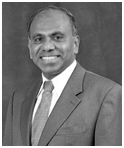 Before taking up this assignment, Dr. Suresh, an alumnus of the Indian Institute of Technology, Madras, was the director of the National Science Foundation (NSF) since 2010. The NSF’s charter is advancing science and engineering research and education.
Before taking up this assignment, Dr. Suresh, an alumnus of the Indian Institute of Technology, Madras, was the director of the National Science Foundation (NSF) since 2010. The NSF’s charter is advancing science and engineering research and education.
Before joining NSF, Dr. Suresh was the Dean of the School of Engineering at MIT between 2007 and 2010, where he headed the Department of Materials Science and Engineering between 2000 and 2006. Dr. Suresh started his teaching/research career at Brown University in 1983 as an assistant professor. He became full professor at Brown in 1989.
Dr. Suresh went to Iowa State University in 1979 for his master’s degree. He earned his doctoral degree from MIT in1981. He was also a post-doctoral fellow at the University of California, Berkeley.
In his career, Dr. Suresh has received innumerable awards from national and international science/technology organizations. He has been elected into ten national science and engineering academies worldwide.
In its press release on his appointment, Carnegie Mellon University announced that “Dr. Suresh has earned a renowned reputation in education and research, garnering numerous awards and honors during his illustrious career as a scholar, educator and public servant.â€
Dr. Suresh’s wife, Mary, is the former Director of Public Health for Wellesley, Massachusetts. They have two daughters, Nina and Meera. Nina, an MIT graduate, is currently a medical student at the University of Massachusetts. Meera, a Wesleyan University graduate with a double major in biology and French, is a post-baccalaureate fellow at the National Institutes of Health in Bethesda, Maryland.
In one interview Suresh recalled something that most of the 45-plus year old readers can relate to: “I could not afford long-distance calls to India as a poor US graduate student.†He has come a very long way from there.
Dr. Suresh Subra is the first India-born professor to lead any of the five schools at MIT, the first India-born scientist to lead NSF, and the first India-born president at CMU.    – By Kollengode S Venkataraman, April 2013
Legal Education Loses Gloss
Posted by admin in April 2013 on April 8, 2013
By Kollengode S Venkataraman
It does not take too much research to know we are a litigious society. Simply watch TV commercials by law firms offering help to get money for victims of accidents, medical malpractice, malfunctioning of medical devices, and complications of medicines… …Â
But still, you may not know how litigious we are. A 2011 Harvard Law School study gives us that info.
Here are the numbers:
Per 100,000              Australia     Canada  France Japan   UK         USA Population  Suits filed                       1540           1450     2410    1768   3680         5810 Number of judges           4.0          3.3       12.5        2.8      2.22      10.80 Number of lawyers         360          26         72         23       251        391 Now there are indications that the legal profession is losing its gloss among youngsters. As reported in the New York Times, the number of applicants seeking legal education has been shrinking over the years. In January of this year, there were 30,000 applicants to law schools for the fall, a 20 percent decrease compared to January 2012 and a 38 percent decline from 2010. See here: http://nyti.ms/11iXUZX
Among the many reasons cited: The job/career prospects and earning potential for freshly minted lawyers are not what they have been even in the recent past; the availability of forms on-line; and the growth of Internet on-line self-service legal help (as in www.legalzoom.com) for many routine needs. With a reasonably good grasp of the English language and knowing what you want, you can create contracts without the need for even paralegals for many routine needs.
Besides, legal research is now done on-line, and is faster, easier, and comprehensive, requiring fewer lawyers, or even paralegals. Also, legal work is increasingly outsourced to less expensive West Virginia, or to countries like India and Pakistan (West Virginians may not like that they are compared to India or Pakistan).
A compounding factor is the huge cost of the 3-year legal education for youngsters after their 4-year bachelor degrees. In 2001 the average tuition for private law school was $23,000; in 2012 it was $40,500. For public law schools the figures were $8,500 and $23,600. This is the case for all undergraduate education as well.
But many law students finance their education through loans. And among private law school graduates, the average debt in 2001 was $70,000; in 2011 it was $125,000. The American education system, like the medical system, has been raising the cost for their service at twice or even three times the rate of inflation.Â
It has reached a point where youngsters from homes with limited resources see that unless they land in top-of-the-line law firms (which gravitate towards applicants with law degrees from top schools), it would be difficult to pay off the debt, and they are opting out.Â
Unlike business schools, where any drop in enrollment from applicants within the nation can be offset by increases in applicants from overseas, foreign students have no interest in American law schools.
In the years ahead, several not-so-top-of–the-line law schools will be closed down, and others may see downward restructuring. The legal education itself will be forced to look into structural reforms to adjust to this changed reality.
But given our deeply-held penchant for litigation, do not bet that this will make us any less litigious as a society. There will be always lawyers who will come to you saying, “You will not pay us unless .      —   April 2013
The Source of Everything
Posted by admin in April 2013 on April 8, 2013
By Vikush
This is a new and occasional feature for readers to compose verses in their native languages – maatru bhasha. The writer, a long-time resident of our area, has used a pen name for these Hindi verses. If you want to contribute, get back to us at ThePatrika@aol.com
Note: In the following verses, Ram not the puranic Ram of the Ramayana, but the Infinite One, the very Prana or Life Force in all living beings.
Ask from where everything comes, why look up to clay puppet? The Seed Word — the One that runs the universe — is imbedded in you! Ask from where everything comes… … Some are known for their wealth, some for bodily strength; The attractive body is just a cadaver, once Ram has departed. Ram is wealth, Ram is strength! Ram is wealth, Ram is strength! Ram will carry you across to destination Ask from where everything comes Life is a draft of wind — here today, won’t be there tomorrow, “This is mine, that is mine.†All these will stay, but you will not. Ram was, and will be here forever! Ram was, and will be here forever! As eons and eons pass us by Ask from where everything comes… … Air, ocean, fire, earth — Creations of Ram’s grace. By mixing these are made all the puppets. But Ram is the heartbeat, Ram is the heartbeat in all puppets! And Ram moves their breaths Ask from where everything comes from… … Ask from where everything comes, why look up to clay puppet? The Seed Word — the One that runs the universe — is imbedded in you! Ask from where everything comes… …   Â – April 2013
Traveling by Train in the North East
Posted by admin in April 2013 on April 8, 2013
Premlata Venkataraman
As I walked into Union Station in Washington DC I was filled with the excitement usual at the start of the train travel. Long train journeys are embedded into the psyche of people from India of a certain age. I have travelled from Bombay when I was a child on steam-engine-powered trains to visit my grandmother in Kerala, an adventurous 2-day trip in those days. And at the end of it was the loving embrace of a grandmother. And since you never slept in the train in the excitement of travel, at least for a couple of days the movement of the train stays with you long after you had gotten off.
But this train trip was a short one slightly under four hours. We were going to meet friends in New Jersey/New York, people I haven’t seen in decades. Getting on the Northeast Regional was a drama in itself. Standing in a long line with the pre-Christmas hordes eager to reach families was frantic enough to bring to mind the VT station during the evening commute.
But once we got into the train cars — remember we used to call them bogies in India — we settled into comfortable seats with plenty of legroom. Hoping for amenities like the European transcontinental hi-speed trains, I was disappointed at the old-world atmospherics inside. The Northeast Regional did not have the large picturesque windows and the décor inside was utilitarian. Though it did have free Wi-Fi, the train we were in did not have the scrolling displays on the on-coming stations or arrival times, or maps for passengers to verify their itinerary. This makes for a nervous traveler constantly checking the schedule.
But the train did keep good speed as it sped through the cities of Baltimore, Wilmington, and Philadelphia. Though I have travelled by automobile to all these cities, the train journey as it ploughed through the burrows of the cities portrayed a totally different view of the cities.
If you pay attention along the way, you will recognize that along the tracks on either side you will see the remnants of old manufacturing facilities, many of them dilapidated and some of them still buzzing with activity, that were there in the first place because of easy access for transporting of their raw materials and finished goods before the Interstates became the preferred way to move goods.
Soon we arrived at our Metropark station, a small and compact station in New Jersey, past Trenton. All the trains that traverse this route stop here for the NJ suburbanites.Â
From New Jersey, during our 4-day stay there, we made several trips to New York on the New Jersey rail transit (NJIT). We were armed with plentiful information from our friends, who were so worried about letting loose a couple from the Burgh onto the maze of rail system in their region where four independent rail systems — Amrak, NJIT, Long Island Rail Road, and the New York Subway — intersect. We became quite adept at changing over from NJIT, Amtrak, LIRR and the New York subways so that we never had to take a cab to go anywhere.
It was a lot of fun, and the experience made me wish that Pittsburgh had a half-decent railroad system interconnecting some of our neighborhoods. It would be easy to have one with the downtown as the “hub,†with four or five “spokes,†say up to Cranberry in the north, South Park on the South, Greensburg to the east, and airport to the west. There is a charm and style to taking mass transit traveling with people from diverse backgrounds. It helps us see our immediate world with a better clarity than through the flashing roads seen through your car windshield while listening to your own echo chamber of radio talk-shows. But given the state of the finance of our city, regional and state governments, sadly, it is not going to happen anytime soon.
Note: Not used to traveling in trains, we lost our pocketsize digital camera. So, be aware of having to take care of your personal belongings when you frequently get in or get out of trains.           – April 2013
Who is A Corrupt Official in India?
Posted by admin in April 2013 on April 8, 2013
By Kollengode S Venkataraman
They are not the officials who take the bribes offered. They are the officials who ask for bribe as a precondition. If you’re confused and wonder what the difference is, you do not know how India works.
A recent news story in The Hindu on Bangalore, India’s high-tech city, throws light onto the murky business of bribery. In Bangalore’s bazaars, when police constables come for their daily evening patrols (beats), the street vendors, on their own, without the constable even making eye contact, stuff the police with cash. A policeman was candid: “I get Rs. 30,000 a month without asking anybody for bribe.”
A friend asked a police officer in Bangalore, “Who is an honest policeman?” The officer replied: “One who doesn’t go out of his way to extort money.” In Bangalore, the normal bribe rate is even formalized so there is no misunderstanding. See the box below.
If this is the situation in Bangalore, you can imagine how it will be in Chennai, Hyderabad, Delhi, Mumbai, Kolkata and other cities. This system is the same in commercial tax departments, customs clearing houses, public works departments, motor vehicles departments, and even government hospitals.
Business people big and small factor these mamools as the cost of doing business, similar to franchise and licensing fees and royalty, and transfer the cost of the bribes to their customers. India is a shining example of a nation whose ordinary consumers subsidize the lifestyles of the corrupt officials and businesses.
Corruption in India is so endemic that nobody complains to the authorities even though they may whine about it in private. Besides, India has perfected corruption to such that everybody is simultaneously both a victim and a beneficiary of corruption. When you benefit in one situation, how can you complain when you are the victim in another?
Another reason why nobody goes through the criminal justice system is simply because the criminal justice system “local policemen and judges in lower courts” itself is corrupt. That brings to mind a Ramayana story I’ve read decades ago in a Tamil magazine.
Rama was standing on a riverbank holding Kodandam, his bow, on his side with one end of the bow sticking into the sand. Rama, hearing a feeble moan from the ground below, looked down. The tip of his bow was resting on the back of a frog, pinning the wretched creature to the ground. Rama, known for his compassion, was horrified. He asked the frog, “Why didn’t you call me for help?”
The frog replied, ““”Rama, if others hurt me, I can call you for help. When you yourself are the cause for my pain, who shall I call?”
Indians feel like the frog in the Ramayana story. Besides, they know only too well the criminal justice system is not anything like the compassionate Rama. So, they rarely use their court system seeking justice, whether it is for petty theft, violence against women, or even big-time land-grab cases. According to a recent report of the Indian Supreme Court, 28 million cases are pending in India’s lower courts, or 28 cases for every 1000 people. They don’t want to be harassed also by the police and the lawyers. Enough already!
They wisely try to settle their disputes using bribes or highly effective extra-judicial resources. These extra-judicial sources become the criminal underworld. Working closely with the political class, they move up the social chain, sometimes even becoming legitimate elected officials.
But then, every society, including the US, has its own version of this model of social upward mobility.
— April 2013
Glimpses from Veerashaiva Vachanas
Posted by admin in April 2013 on April 8, 2013
By Kollengode S Venkataraman
Veerashaivaas, also known as Lingaayats, are the followers of a strong reform movement of the 12th century, and are in large numbers in the Indian states of Karnataka, Maharashtra and parts of Andhra Pradesh and Tamil Nadu. The movement’s founders defied the Hindu orthodoxy of that era by rejecting the ossified birth-based varna system of society then in existence. In the monotheistic Veerashaiva tradition, as with other Hindu traditions, everyone is a repository of Divinity, which one needs to experience through individual effort and bhakti without the need for an intermediary, like a priest. It also rejected the propitiatory and compensatory rituals.
Being egalitarian at its core, the Veerashaiva Movement did not differentiate people based on birth (caste), creed, gender, or language. That the Lingaayats eventually became a caste by themselves is an ironic twist on how reform movements work in India.
The Lingaayat teachings are in vachanas, meaning “sayings,†rendered in Kannada. The vachanas of Veerashaiva thinkers — Basava Anna (Basava, the elder brother), Mahadevi Akka (Mahadevi, the elder sister), Allama Prabhu, among others — are well-known. Like the writings of the Tamil Bhakti poets who preceded them between the 5th and 10th centuries, Veerashaiva thinkers wrote in the native language Kannada for the understanding of their message by everyone.
The vachana composers addressed their sayings to the presiding deity in the Shiva temple of their choice, like the Tamil Bhakti poets between 6th and 10th centuries. The vachanas are pithy and sometimes cryptic, needing commentaries. The vachana literature continues to influence life in Karnataka and other places.
Starting in the late 19th and 20 centuries, the Lingaayats’ contribution to school and college education throughout Karnataka is significant.
Here are two examples of vachanas. The first one by Basava (1134-1196) is simple, yet profound in its meaning.
 Â Â Â Â Â Â Â Â Â Â Â Â Â Â Â Â Â Â Â Â Â Â Â Â Â Â Â Â Â Â Â Â Â Â Â Â Â Â Â Â Â Â Â Â Â Â Â Â Â Â Â Â Â Â Â Â Â Â The Rich will build temples for Shiva.
                                                                What can I, a poor man, do?
                                          [But then] My legs are the pillars; my body, the temple.
                                           And my head is the golden kalasha, the shining crown.
                          Listen, O, Koodala Sangama Deva (the Deity at the Confluencing Rivers)!
                                             The standing ones decay. The moving ones, never.
                                                          The Rich will build temples for Shiva.
                                                                What can I, a poor man, do?
                                          [But then] My legs are the pillars; my body, the temple.
                                           And my head is the golden kalasha, the shining crown.
                          Listen, O, Koodala Sangama Deva (the Deity at the Confluencing Rivers)!
                                             The standing ones decay. The moving ones, never.
In his travels Basava would have seen dilapidated temples. So he declares, “While the ‘immobile’ ones built with stones and mortar ultimately perish, Shiva lives forever in the hearts of the initiated in each succeeding generation.â€Â Basava calls God’s devotees “walking†temples, identical to what Tirumoolar declared several centuries ago in Tirumandiram, a monumental canonical work containing 3000-plus terse 4-line verses..
Here is a vachana by Allama Prabhu (born 1115 AD) a contemporary of Basavanna. Allama Prabhu’s vachanas are addressed to Guheshawara, which literally means “Ishwara (Divine Being) dwelling in the heart-cave (guha, or guhe in Kannada).
The fire in the stone, can it burn? The tree in the seed, can it make the rustling noise? Being Unseen, he does not appear in flashes to people. The jeeva, in-dwelling one, knows the Guheshwara.Here Allama uses imagery from nature to tell that only with contemplative sensitivity, can one realize the Universal Self within.
When two hard stones rub against each other, the friction leads to sparks that can ignite fire in dry leaves. Caught up in our daily pursuits, we never recognize this potential for fire in simple rocks lying around.
Similarly, we do not see that a seed has within itself the potential for a fully grown tree whose leaves rustle in gentle breeze in summer. We plant a seed. It sprouts, becomes a small plant, eventually growing into a big tree with thick foliage. On a hot summer evening in the gentle cool breeze, the leaves rustle, making gentle whispers.
Using these imageries, Allama declares that only the in-dwelling jeeva can recognize the Infinite One within, the same One which pervades everything around us. But to recognize this, we need to first see the divinity within ourselves even in the midst of our daily grind.
—  By Kollengode S Venkataraman. The author acknowledges Nayantara Swamy from Florida and Lata Mallikarjuna from Monroeville for their help with his rusty Kannada.          – April 2013
Pope Benedict Leaves A Scandal-Ridden Vatican
Posted by admin in April 2013 on April 8, 2013
By Kollengode S. Venkataraman
Life-time tenure is the privilege of a very few — Supreme Court judges in the US, the Pope, and despots. All of them have something in common: None can question their decisions. At least, US Supreme Court judges can only decide on cases brought before them. Besides, we have nine of them, all equal among themselves. Even tyrants and despots can be, and are, sometimes overthrown or killed, often with covert and overt help from other nation-states.
But popes in the last 600 years have held on to their office till their death despite the intrigues in the Vatican’s labyrinthine bureaucracy. Frank Bruni in the New York Times has described the abject condition in which the very sick Pope John Paul II was kept in office in his final days by the Vatican officials, who are the real power wielders there.
The Vatican is powerful — it is the only religious institution to have diplomatic relations with nations in the rest of the world. It has over a billion followers worldwide, which it manages with an obedient bureaucracy that dwarfs even that of the Chinese in its hierarchical details and obedience. Its assets, reach and influence are disproportional to its size. So, tenure-till-death for popes, who typically ascend their throne in their sixties, is no way to run the gargantuan multinational corporation of Roman Catholicism in the 21st century confronting complex issues.
The Pope is also infallible, and the Holy Father’s power, while in office, is absolute. This means that the Vatican bureaucrats and officials, who work closely with the Pope wield enormous influence behind the scene. The political intrigues within the Vatican will will best all other palace intrigues, simply because the Vatican, leading the Christian faith, often speaks on many temporal matters when it suits its political ideology.
So, when Pope Benedict XVI resigned citing old age and ill health to handle the stresses of the office, encomiums poured from all over on his humility and candor for giving up the job. The stressful job requires energy to attend to the serious policy matters of the church, daily routines, and state visits. The last pope to resign, Gregory XII, resigned nearly 600 years ago under schism when three others were declared as popes by rival groups.Â
Pope Benedict XVI faced serious problems during his tenure — shrinking influence and declining church attendance in Europe and North America, difficulty in recruiting priests and nuns in Caucasian countries, and finally, crimes of pedophilia committed by clergy in North America, Europe, Australia, even Latin America. If the shame of pedophilia was not enough, the world was stunned to know that the archdioceses — including the archbishops — covered up the misbehavior of their deviant priests. In the US many archdioceses filed for bankruptcy to shield themselves from the financial obligation of judgments against the errant priests in lawsuits.
Before becoming Pope Benedict XVI, as Cardinal Ratzinger, he headed the Holy Office of the Congregation of the Doctrine of the Faith, earlier known as the Supreme Sacred Congregation of the Roman Inquisition, or simply the infamous Inquisition. In this office, he had exclusive access to all internal documents on wayward priests world-wide.
Ratzinger as a young man studied philosophy and theology, and was ordained in 1951. He earned a doctorate in theology in 1953. For years he was a professor of theology at various universities in Germany. He was known for the depth and breadth of his intellect. He published many essays, sermons and reflections, reinforcing his scholarly reputation.
As an ardent student of philosophy and theology, Ratzinger would have studied other systems of approaches in mankind’s eternal quest for spiritual growth. Further, as a priest he would have grasped the diverse temperamental profiles of people even within an archdiocese. But Cardinal Ratzinger, even before becoming Pope, was quite dogmatic on temporal matters and on liturgies as he entered the 21st century, even as he saw diversity of opinions on various issues confronting his church.
Cardinal Ratzinger’s dogmatism extended to his interactions with leaders from other faiths. As we entered the new millennia, in the late 1990s Anno Domini, the UN commissioned leaders of different faiths to come up with a resolution on religious amity. A draft resolution was circulated among the leaders from diverse faiths — Judaism, Christianity, Islam, Buddhism, Zoroastrianism, Jainism, Hinduism, Sikhism and others. Cardinal Ratzinger led the Vatican delegation.
While finalizing the draft, Swami Dayananda Saraswati made his case that the resolution should replace “tolerance” among the religions with the phrase ‘mutual respect.” The Swamy’ point was noteworthy. Tolerance may signify no more than forbearance and the permission given by the adherents of a dominant religion for other religions to exist, even though the latter are looked on with disapproval as inferior, mistaken or harmful. An example given was, when we are invited as guests, simply to be “tolerated” by our host is an insult. We want to be treated with respect as equals. See here for details: http://tinyurl.com/Tlrnc-Mtl-Rspct.
It was revealing that Cardinal Ratzinger objected to replacing “tolerance” with “mutual respect.” As Rajiv Malhotra of Infinity Foundation notes, “If religions deemed ‘heathen’ were to be officially respected, there would be no justification for converting their adherents to Christianity” or to other religions.
Swami Dayananda Saraswati was under pressure to relent. But the Swami persisted that it was time for the non-Abrahamic religions to be respected as equals and not just tolerated by the three “religions of the book.” At the last minute the Vatican conceded, and the resolution declared that all religions would agree to respect one another. This was big news and was broadcast widely among the non-Abrahamic religions.
However, within a month, the Vatican issued a new policy stating that while “followers of other religions can receive divine grace, it is also certain that objectively speaking they are in a gravely deficient situation in comparison with those who, in the Church, have the fullness of the means of salvation.” Even though many liberal Christians disagreed with this policy, this still remains the Vatican’s official position.
Pope Benedict XVI’s resignation is worthy of recognition in the background of many scandals that were decades in the making exploding on his watch. Giving up absolute power is not easy for anyone. However, the cerebral Pope’s and the Vatican’s intolerance in this day and age to accept multiple approaches in mankind’s spiritual quest, with or without the need for divine intervention, leaves in many, including many Christians, an uneasy feeling. — April 2013
Friendship of Convenience — A Story from The Mahabharata
Posted by admin in April 2013 on April 8, 2013
Retold by Kollengode S Venkataraman
Panchatantra and Hitopadesha stories often teach not only about morality or ethics but also tell us how to get out of sticky situations, and how we can use our apparent weakness to our advantage in precarious situations, using deceit and even treachery.
You can interpret the following fable from the Mahabharata any which way you want:
- as a simple bed-time story to children,
or to understand
- fights among siblings, parents, and in-laws over property; or
- work situations with competing interests, alliances, constraints; or
- cold-blooded coalition building in temple politics to settle old scores of perceived humiliations; or
- national politics on how to take advantage of your enemy’s weaknesses and neutralize his/her strength; or
- what happens in the UN when nations with widely diverse demographics, histories and cultures; constraints on resources; internal problems and external threats; Â and global political objectives, try to negotiate to get the best deal for themselves; or
- long wars involving multinational forces where the participating nations have conflicting national, regional and global agenda, different constraints in weaponry, money, manpower, and time lines.   As we know very well by now, conflicting interests vitiate wars with no clear winners. Or military victory can lead to economic disasters. Britannia won World War II, but the empire imploded.
We learn from these fables that ideologies are only smokescreens behind which human interactions — personal, corporate, and national – are motivated by unadulterated and unenlightened self-interest to exploit the situations of the moment to one’s advantage.
In a forest lived Poonai, a fat cat, living off rats and small birds that tried not to be in the cat’s way. One day, a hunter came to the forest and spread his net to catch wild animals. He had sprinkled pieces of meat inside the net as bait. The hungry Poonai went for the bait, and was caught in the net. The sun was setting, and it was getting dark.
There came Eli, the mouse. On seeing his archenemy Poonai trapped in the hunter’s net, he was gleefully happy.
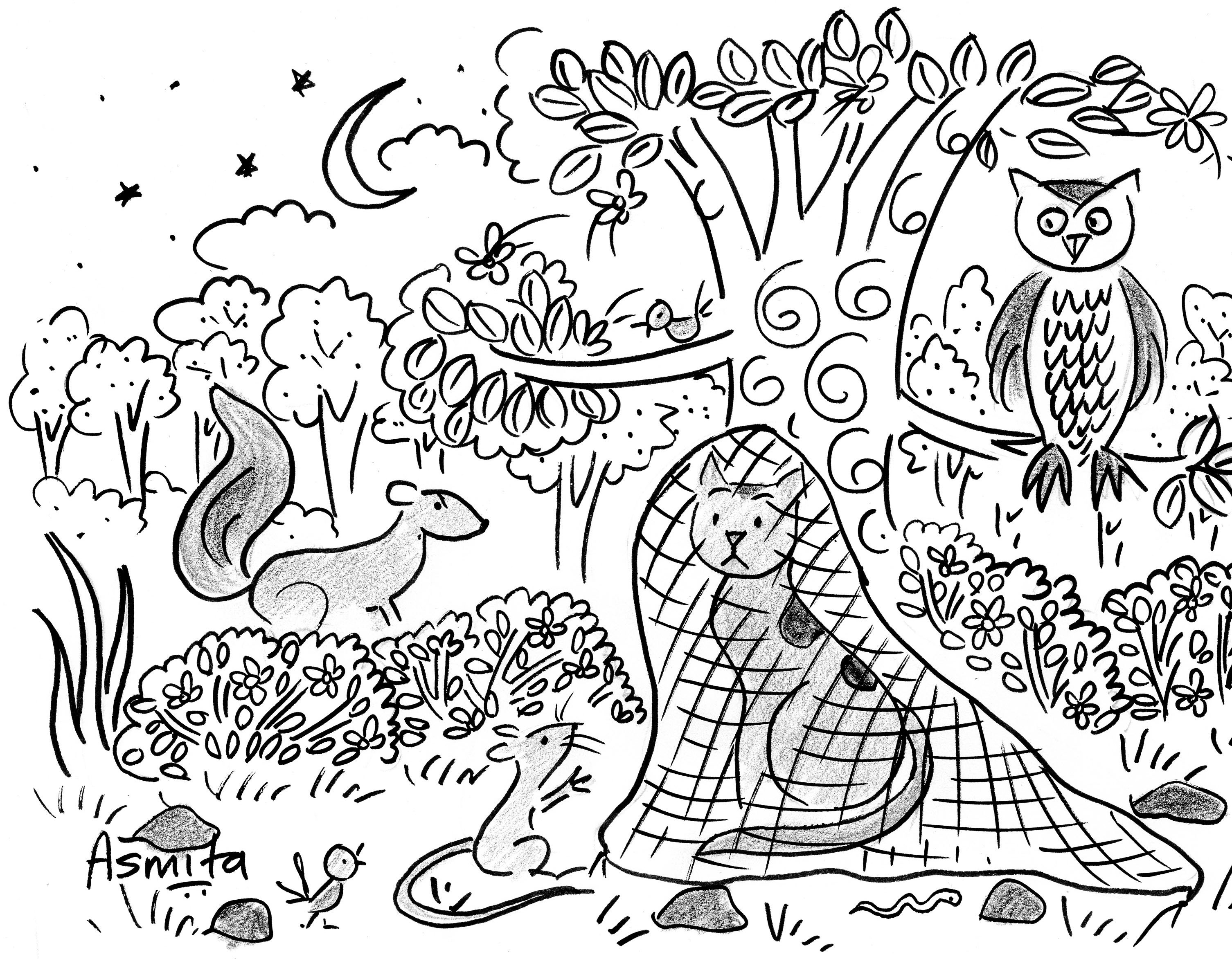 But Eli’s happiness was short-lived. He also saw above an owl in a tree and a mongoose on the ground, both eyeing Eli as their evening meal. Eli, seeing that his end was near from the mongoose and the owl, quickly devised a plan.
But Eli’s happiness was short-lived. He also saw above an owl in a tree and a mongoose on the ground, both eyeing Eli as their evening meal. Eli, seeing that his end was near from the mongoose and the owl, quickly devised a plan.
It got inside the net. He told Poonai, “Dear Poonai, I feel bad for your situation. I can release you by cutting the nets, provided you give me shelter for some time from the owl and the mongoose inside the nest.”
Poonai thought, “Normally, Eli is my snack. But this time is not normal. I need to use Eli to get my freedom.â€
Thinking thus, Poonai told Eli, “You make a good point. Both of us are now in danger. Yes. I will protect you from the owl and mongoose. You can stay inside. But if you don’t keep your promise of releasing me to freedom before the hunter comes, I will kill you before the hunter catches me.â€
So, here was the most unusual sight of a cat protecting a mouse inside the net, with an owl above in the tree and a mongoose on the ground each looking for the chance to catch the mouse.
Eli thought: “If I am going to release Poonai before daybreak, the owl or the mongoose are sure to kill me. I should not be in a hurry to release him anytime soon. Let me wait for daybreak.â€
But Poonai was impatient and became apprehensive that he would never be released. But Eli asked Poonai to be patient.
Eventually, there were signs of daybreak, with light on the eastern horizon. Seeing light, the owl and the mongoose ran for their safety.
Eli felt safe from his external threats, but still thought this: “Poonai has not had anything to eat all night. He is hungry. If I release him now, surely I will be his meal. But since his life is in my hands, he will not harm me even when he is hungry. I will wait till I see the hunter far away. Then I will quickly rip open the net. Poonai will have to run away from the hunter. That will ensure my safety.â€
Poonai, though frustrated, had no choice. He was forced to bide his time.
Soon the hunter appeared faraway. He was happy to see a cat trapped in his net. But Eli quickly cut the nets giving enough space for Poonai to escape, but not too much time for the cat to make a feast of himself, Eli.
Both Eli and Poonai ran for their safety and freedom.                            – April 2013
Donald Trump, the Tasteless
Posted by admin in April 2013 on April 8, 2013
While many of you drive to work, I travel to work. I have a long commute. Besides, I need to go through a tunnel and a bridge. How long is my commute? Well, if there are no traffic jams en route, it takes over an hour each way. But these days are rare. Days of 90-min commute each way are common. Sometimes, it even takes 150 minutes. Once the Parkway freezes due to bad weather or accidents, automobiles only crawl, not only on the freeway, but also on all the alternate routes.
I’ve tried several things to keep myself busy during my long commute — like trying to memorize Sanskrit shlokas and Tamil verses — some of them ribald and scatological; listening to NPR; rock or country music; or the fire-and-brimstone or syrupy Christian preachers. But nothing like radio talk shows. For a variety of reasons, most of the radio talk shows have a strong right-wing tilt. Having listened to them for long, I have a high threshold for their predictable rhetoric. So, I listen to Sean Hannity on 104.7 and his adoring fans on FM every day on my way home. Sometimes Quinn and Rose on my way to work.
My threshold could be high for right-wing rhetoric, but my tolerance is rather low for tastelessness, as I found out recently listening to Sean.
It was on January 24, and in the 3rd hour on Hannity’s afternoon radio talk show, somewhere between the 20th and 40th minute. He was interviewing Donald Trump. Hannity patronizingly admires Trump for his business acumen, wealth, bravado, ambition, his expensive lifestyle, and also for his charming wife and lovely children.
That Donald Trump is vainglorious and pompous is well known. But vanity and pomposity can make one quickly slip into tastelessness, as it happened that day.
Trump was responding to Hannity adoringly telling Trump how lovely his daughter was.
I was astounded by Trump’s response. I did not get the exact words. But this is the gist of what he said: “Sean, my daughter is so gorgeous that if I were young today, I will date her.â€
Trump is known for his garish tastes. But still, could he not have found some other way of telling how gorgeous his daughter is? It ruined the reminder of my long commute back home, as if getting stuck on the Parkway staring at the tailpipes of the vehicles in front of me was not bad enough.
My colleague at work once told me, “Venkat, you cannot buy taste with wealth.â€Â How true! Besides, as a Tamil saying goes, “For every crow, its fledglings are the most beautiful.â€Â      – By  K S Venkataraman



